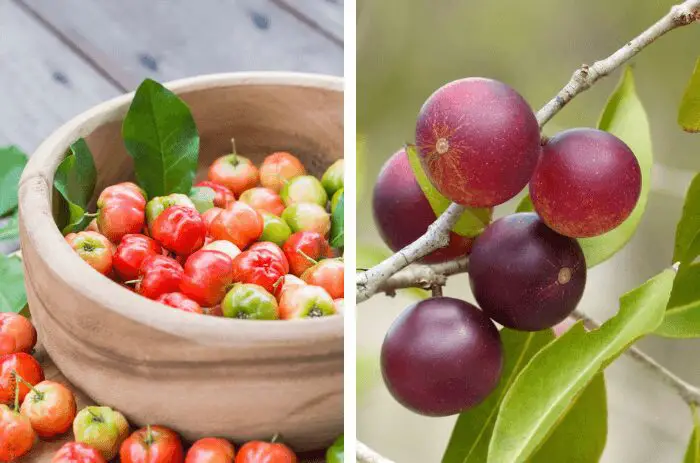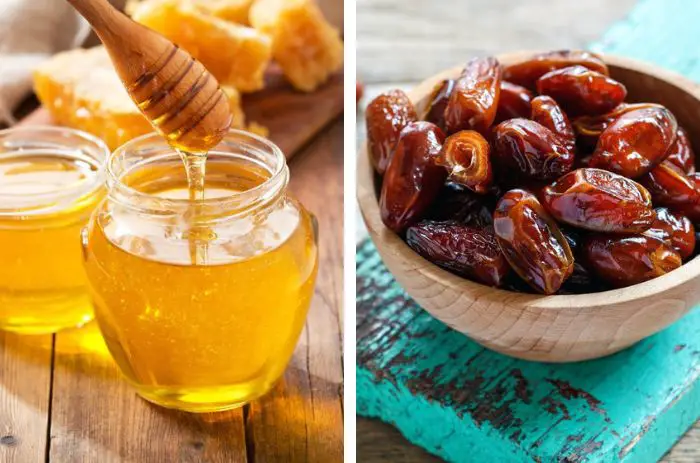So you fancy yourself a culinary adventurer, a true connoisseur of the finer tastes in life. Or perhaps you just love adding a pop of color to your garden. Either way, you’ve stumbled upon a delightful fork in the herbaceous road: purple basil and green basil. These two herbs, while they share the name “basil,” offer distinctive sensory journeys that can elevate your cooking and gardening experience. In this deep dive, we’ll explore the marvelous world of basil in all its purple and green glory.
The Basics of Basil
Before we dive headfirst into the kaleidoscope of flavors, let’s start with the basics. Basil, a darling of Mediterranean and Asian cuisine, is a versatile herb that has found its way into countless dishes worldwide. From pasta sauces to salads, and curries to pesto, basil’s vibrant fragrance and flavor make it a star ingredient in kitchens across the globe. And it comes in various shades, but the most common ones are the earthy green basil and the enigmatic purple basil.
Getting to Know Purple Basil
Purple basil is like the mysterious cousin of the basil family, with its striking violet hues. Its leaves, stems, and flowers proudly wear shades of purple, reminiscent of a twilight garden. These hues are courtesy of anthocyanins, natural pigments that grace plants with their enchanting purple, red, or blue attire.
Appearance: The color spectrum of purple basil is wide, ranging from a deep, almost black-purple to a lighter, more reddish-purple. Some varieties even sport green stems, adding an intriguing twist to their aesthetic.
Flavor: Now, brace yourself for a flavor journey. Purple basil offers a taste that’s akin to cloves with a hint of pepperiness. It dances on the palate with a sweet, almost floral aroma. The intensity of this flavor may vary between different varieties, some being more pronounced than others.
Uses: Beyond its visual allure, purple basil occasionally graces the plates of Italian and Mediterranean cuisines. It shines as a garnish and imparts its captivating color to dishes like pesto, tomato-based creations, and fresh salads. Additionally, certain purple basil strains are sought after for their crimson pigments, which find their way into the food industry as natural colorants.
Growing and Harvesting: Growing purple basil doesn’t stray far from the usual basil-care routine. It craves the sun’s warm embrace and well-draining soil, and it’s quite happy in containers or gardens. However, keep in mind that purple basil can be a bit temperamental. High temperatures and too much direct sunlight can make its purple robe fade or turn green. So, some shade and cooler temperatures during harvesting are your best allies here.
Enter the Evergreen: Green Basil
Green basil, also known as sweet basil, is the friendly, next-door neighbor of purple basil. Its lush, green leaves and sweet, slightly minty flavor make it the poster child for basil varieties.
Appearance: Unlike its purple cousin, green basil is reliably green, with variations in leaf size and shape between different varieties. Some have broader leaves, while others flaunt daintier ones.
Flavor: The flavor profile of green basil is more in line with the traditional basil taste. It’s sweet, with a dash of mint, and a subtle hint of spice. The aroma is a fresh, bright reminder of sun-soaked Mediterranean dishes.
Uses: Green basil is the go-to basil for many culinary applications. You’ll spot it in various dishes, from pasta sauces and soups to salads and curries. It’s also a staple in Thai and Vietnamese cuisine, where it adds its distinct flair to curries, stir-fries, and noodle dishes.
Growing and Harvesting: Just like its purple counterpart, green basil craves warmth and sunlight but is otherwise low-maintenance. It’s a reliable annual herb that flourishes in well-drained soil. Regular pruning is a good practice to keep it bushy and prevent flowering, ensuring you have a steady supply of those fragrant leaves.
The Basil Face-Off
Now that we’ve examined these basil buddies individually, let’s stage a friendly face-off. How do purple basil and green basil stack up against each other?
Appearance: Purple basil wins in the visual department, hands down. Its vibrant colors make it a showstopper in any garden or on any plate. But green basil has its own charm, with its lush greenery offering a classic and reliable aesthetic.
Flavor: This is where the real showdown begins. Purple basil’s clove-like, slightly peppery taste adds a unique twist to dishes. It’s for those who appreciate a hint of the exotic in their meals. On the other hand, green basil, with its sweet, minty, and slightly spicy notes, plays it safe with a more traditional flavor profile.
Uses: While both basil types can grace your culinary creations, purple basil often takes the spotlight as a garnish or a visual accent. It’s the go-to for dishes that need a burst of color, like Italian pasta or Mediterranean salads. Meanwhile, green basil is the all-rounder, making its way into countless recipes, from Italian pasta sauces to Thai green curry.
Growing and Harvesting: Purple basil requires a bit more pampering. Its sensitivity to temperature and sunlight might test your gardening skills. Green basil, the more adaptable sibling, doesn’t mind the heat and sun, making it an excellent choice for beginners.
Beyond the Plate: Medicinal Magic
Both purple basil and green basil aren’t just culinary heroes; they have their fair share of medicinal superpowers too. Basil is renowned for its anti-inflammatory and antibacterial properties, and it has a history of traditional use to soothe headaches, digestive discomfort, and insect bites. So, while you’re spicing up your meals, you’re also giving your health a subtle boost.
In Your Hands: Growing and Harvesting
Growing basil, whether it’s the regal purple or the vibrant green, is a delightful journey. You can nurture them in your garden or even a modest balcony pot. Regular pruning encourages bushy growth and prevents early flowering, ensuring you have a steady supply of basil for your culinary escapades.
Harvesting is a breeze for both types of basil. Just pluck the leaves as needed, or if you’re feeling adventurous, go for the stems. You can even take it a step further and infuse basil in oils or vinegars, creating your signature dressing for salads or a drizzle for roasted vegetables.
The Wrap-up
In the end, the choice between purple basil and green basil is akin to choosing between two dear friends. One is the life of the party with its vibrant personality, while the other is your steadfast companion for everyday adventures. Your decision ultimately comes down to personal preference and the kind of culinary masterpiece you wish to create.
So, the next time you embark on a culinary journey, remember that the basil you choose can paint a different flavor on your canvas. Whether it’s the enigmatic purple basil or the evergreen green basil, both have their unique qualities that can transform a simple dish into a work of art.
Go ahead, embrace the basil spectrum, and let your taste buds and your garden revel in the delightful world of basil.



